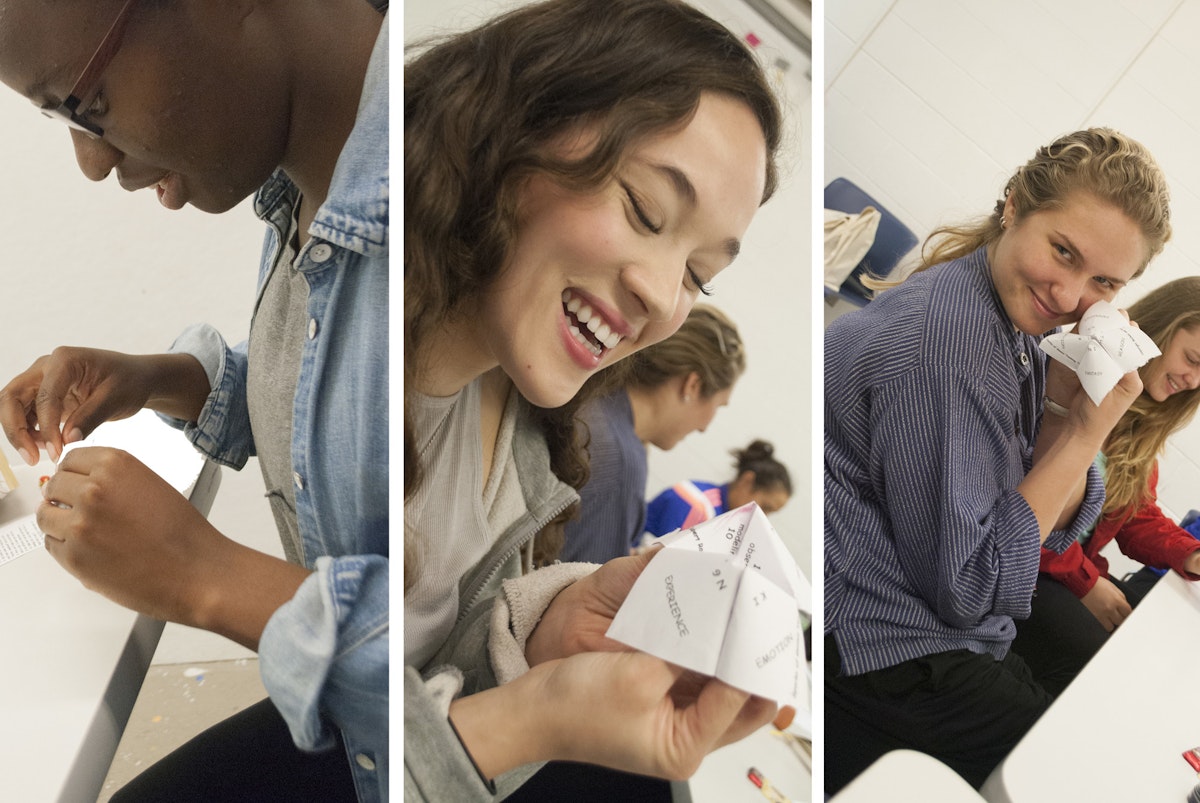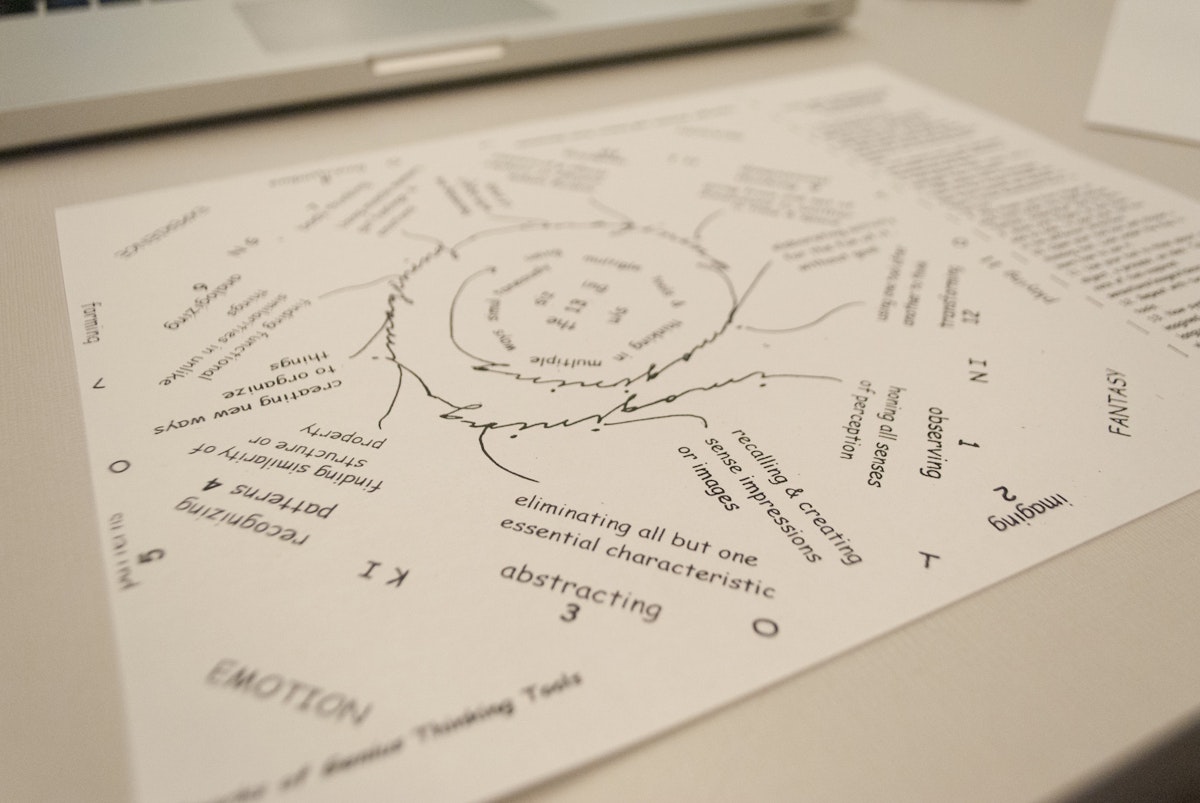Creative Connections: Dr. Robert Root-Bernstein Visits Stamps
Dr. Robert Root-Bernstein made a recent visit to Marianetta Porter and Beth Hay's Integrative Project class to speak about the power of creative thinking.
Root-Bernstein is a professor of Physiology at Michigan State University, a MacArthur "Genius Grant" recipient, and co-author of the book Sparks of Genius: The Thirteen Thinking Tools of the World's Most Creative People . While Root-Bernstein's talk revolved around his own research, there were astounding parallels between his work and the core principles of the Stamps curriculum: interdisciplinary creative practice, inquiry-led work, community engagement, and creative excellence.
According to Root-Bernstein, creative thinking has the ability to transform the fields of math, science, and the arts. Throughout history, artists and designers have been successful creating new knowledge through interdisciplinary creative practice. Leonardo di Vinci uncovered principles of tree growth through sketching and observation; Abbott Thayer discovered animal camouflage through painting; Wallace Walker discovered the iso axis through paper folding; and artists Heater Ackroyd and Dan Harvey collaborated with scientists Helen Ought and Sid Thomas to develop photosynthetic photography and spectroscopic techniques. But how can we learn from the process adopted by these masters? How can Stamps students cultivate this kind of creative success?

According to Root-Bernstein, something that all of these masters have in common is their dedication to non-linear thinking. Through a more expansive approach to inquiry, individuals are able to focus on processes, skills, methods, and problems rather than results.
In his book, Root-Bernstein promotes thirteen inquiry methods that can help individuals cultivate non-logical thinking: observing, imagining, abstracting, recognizing patterns, forming patterns, analogizing, body thinking, empathizing, dimensional thinking, modelling, playing, transforming, and synthesizing. These tools create different ways of thinking that yield results often overlooked by conventional notions of thought generation. Root-Bernstein encouraged these practices by implementing a paper folding exercise that gave each of the students a guide to implementing his thirteen methods into their artistic practice.

Aside from encouraging non-linear thinking, Root-Bernstein's tactics also encourage discovery that can then be translated into other forms of external communication. These forms of communication can emerge as anything from creative writing, to a new method of testing the resiliency of grass. The translation of these feelings and emotion into words and number still isn't fully understood and has been mulled over by creatives and logics alike. Root-Bernstein likened this form of thinking to Einstein's methods of discovery. Einstein was not known for his mathematic abilities and often required colleague support when it came to complex mathematics but is still known as one of the greatest physicists of all time. This was due to his ability to visualize a problem and solve it long before he knew how to explain. In one instance he went as far as visualizing himself as a photon to understand how they interacted with each other. This understanding was later translated and communicated as part of his emission theory of light.

While researchers from multiple fields of study can benefit from non-linear investigations, the creative thinking and visualization inherent in art and design lends itself well to this more expansive approach to research and knowledge generation - a belief that is strongly held, encouraged, and nurtured here at Stamps.
Story and images by Jerika Tillman (BFA '17).